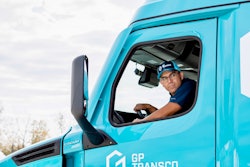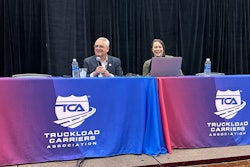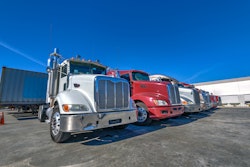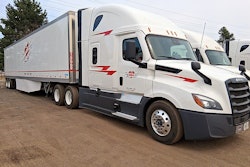Having no cell signal is something out of a horror film. You see the characters reach a rural area with no service, and you know something bad is about to go down.
Wireless connectivity is something most people in the U.S. take for granted, but according to a recent report by J.D. Power, it’s getting worse. The 2025 U.S. Wireless Network Quality Performance Study found an increase of two network problems per 100 uses from nine in the first half of 2024 to 11 in the second half.
According to the report, the average time wireless customers spend on their devices increased 40 minutes compared to the first half of 2024, and more than one-third of Gen X1 and Gen Y uses their phones for more than eight hours every two days, most of which is spent streaming, gaming or browsing.
That increase in demand for bandwidth is causing network problems. Fortunately, the trucking industry, which relies on this diminishing wireless connectivity for the use of technology in trucks, hasn’t experienced a major impact from this … yet.
“I have yet to hear carriers complain about cellular congestion as being an issue,” said Jay Delaney, director of product at transportation management provider Magnus Technologies. “However, with the rapid increase in data (driven primarily by streaming services, which are very data intensive), I suspect we may well start to see carriers being impacted in the near future.”
Delaney said the good news is the data requirements are generally small for most transportation technology compared to uses like streaming, which is what consumes the majority of bandwidth. For example, streaming a movie can take gigabytes of data. He said some newer technology for streaming does some compression that helps so "think 250MB or 250,000,000 bytes." That's compared to 2,000 bytes for a typical delivery transaction with up to around 100,000 bytes if scanned images are included.
“Most of the mobile apps can support store and forward capability so that if there is congestion, the message remains in queue and is sent when the congestion softens,” he added. “I think this will have a dampening effect on the transportation industry’s impacts as cellular congestion continues to be a more and more prolific issue for other industries.”
Levels of functionality
Rand McNally Chief Technology Officer Hans Molin said his company’s technology solutions don’t use a ton of bandwidth, and because the company has already compressed and optimized the data stream coming off the vehicle, it is much less susceptible to connectivity issues.
But that’s not the case with every solution.
That expectation of always being connected, he said, has led many trucking technology providers to build solutions fully around the cloud.
Though cellular coverage is getting better, it isn’t getting better everywhere, Molin said, so system developers for commercial vehicles, which are used for transportation throughout metro and rural areas alike, can’t think with the mindset that service will always be accessible.
“With consumer devices consuming so much more data and people just expecting to stream Netflix 24/7 on their cell phones, I think there’s a lot of focus on (expanding coverage in) the metropolitan areas and the residential areas,” Molin said. “It's surprising how often I drive on the big highways out in between the cities, and you'll lose coverage.”
Certain systems still need to work whether wireless connectivity is available or not.
“There are even safety systems out on the market today for commercial vehicles that are fully cloud based. They expect to get a continuous data feed from the vehicle, and then they do something on the cloud, and then they send a real-time alert down to the vehicle, and when the connection isn't there, that whole thing fails,” Molin said. “If it's a safety-related system, we have to make sure that if there are areas where trucks drive that don't have connection … you have to have the backup.”
That’s why Rand McNally offers very few solutions that are purely cloud based, he said. The company always has a device in the vehicle that has processing power onboard, especially if it’s safety critical like lane departure or collision warnings or real-time diagnostics of the vehicle.
If an alert needs to be real time, the company doesn’t use a cloud-based system for that. Instead, Rand McNally uses the cloud more as a support system to augment data.
“Our view is you shouldn't just do that cloud based on the back end because when the connection goes down – not if, but when – now, you don't have an alert,” Molin said. “Then I can buffer information. I can augment it and say, ‘This is why it happened,’ or we can look at more than before and after. You can do that on the cloud. You can do that an hour later when you have connection.
“But the instant warning to the driver, that has to be processed on the device, and not every company does it that way,” he added.














